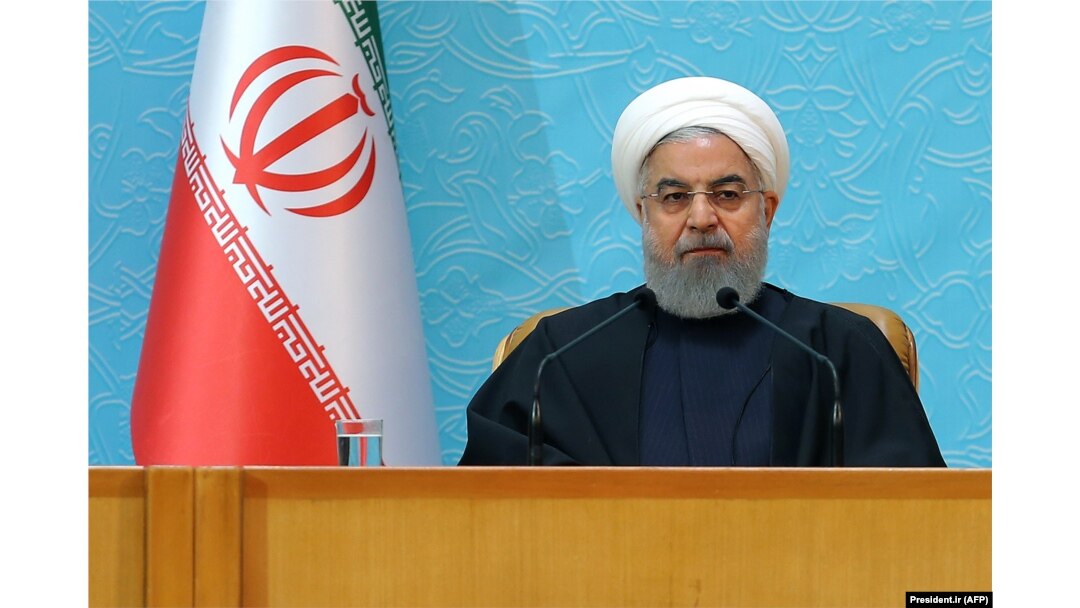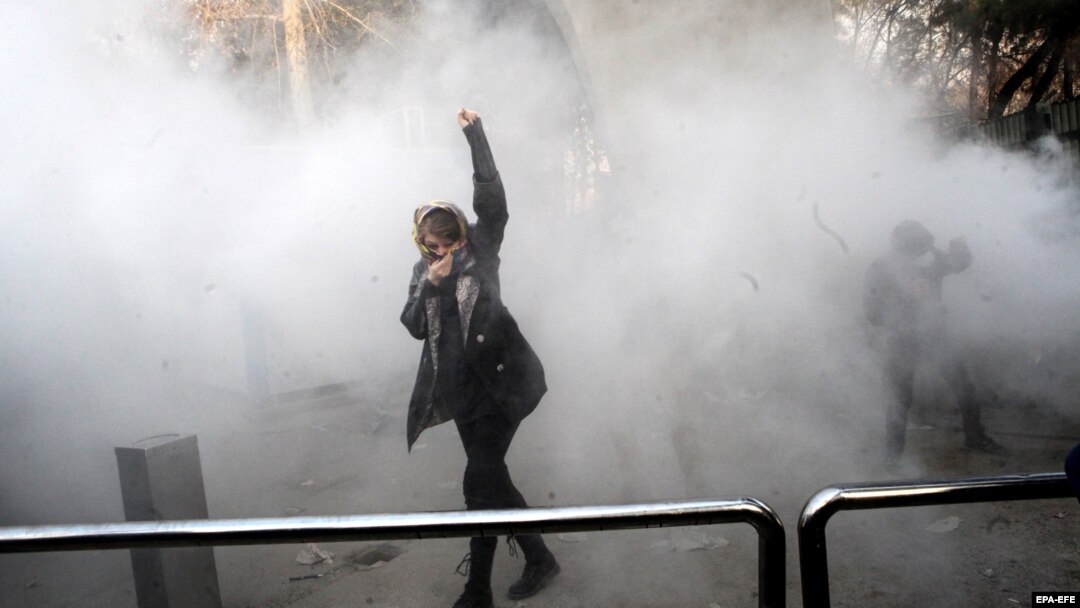The biggest challenge to Iran's establishment in years fizzled out after a couple of weeks of violent demonstrations, but while widespread discontent has been quieted for now, the calm won't last forever.
The roots of the protests -- frustration among the youth over their lack of freedoms and opportunities -- remain just below the surface. And with the younger generation clearly exhibiting its willingness to take to the streets to express its anger over the status quo, the onus is on the Islamic republic's aging leadership to bridge a growing generational divide.
"Young Iranians hold higher expectations, have greater access to information and exposure to the outside world, and aspire to more freedoms and opportunities," says Ahmad Majidyar, a South Asia and Middle East expert for the Washington-based Middle East Institute.
For an aging establishment whose defining moment came with the 1979 Islamic Revolution, finding a way to get through to a rising majority that wasn't alive to see the event that forged their state will not be an easy task.
Nearly 60 percent of Iran's population of 82 million is under the age of 35, and nearly 70 percent of Iranians were not yet born when the Islamic republic was established, according to the U.S. Census Bureau.
And, according to Majidyar, "they are deeply frustrated with economic and political stagnation in the country, and do not see the ruling political establishment as capable of addressing their needs."
'Two Generations'
As the nationwide and deadly protests wound down, President Hassan Rohani weighed in on the generational divide and warned that a different approach was needed.
"One cannot force one's lifestyle on the future generations," the 69-year-old Rohani, who cast himself as a relative moderate and courted the country's youth in winning two elections, said on January 8. "The problem is that we want two generations after us to live the way we like them to."

Iranian President Hassan Rohani (file photo)
"The people have demands, some of which are economic-, social-, and security-related, and all these demands should be heeded," Rohani added. "We have no infallible officials and any authority can be criticized."
The demonstrations began on December 28 in the northeastern city Mashhad over high unemployment and a spike in egg prices, but when authorities reacted harshly by arresting dozens it quickly turned into a nationwide protest. Before it was over, rallies had taken place in more than 100 cities and towns across the country, highlighting the grievances of citizens from a spectrum of regions, ages, and social classes.
As the protests spread, so did the scope of issues. Protesters increasingly demanded greater social and political freedoms, and the calls in Mashhad for Rohani to step down evolved into open criticism of the clerical establishment, including Supreme Leader Ayatollah Ali Khamenei.
When the smoke cleared, around 3,700 demonstrators had been detained, and 25 -- including police and security forces -- killed.
Since 1979, power has been monopolized by an older generation of leaders who shaped Iran's Islamic system of government, known as velayat-e faqih (the notion of guardianship of the jurisprudent), and have kept a tight lid on dissent.
Iranian Supreme Leader Ayatollah Ali Khamenei has been in power for 29 years. (file photo)
At the helm is the supreme leader, currently the 78-year-old Khamenei. Two powerful decision-making bodies -- the Assembly of Experts and Guardians Council -- are led by a 90-year-old hard-line conservative cleric, Ayatollah Ahmad Jannati. Ali Larijani, 60, is the speaker of parliament, and his brother, Sadeq Larijani, 59, is the head of the powerful Judiciary.
"We are in middle of a phase where people are rethinking issues of legitimacy and responsibility vis-a-vis their leadership," says Scott Lucas, an Iran specialist at Birmingham University in Britain and editor of the EA World View website.
"Many Iranians under 30 are facing challenges about whether they can fulfil their hopes and aspirations," Lucas continues. "These are no longer necessarily defined by the Islamic Revolution. Instead, they are part of a world in which there are economic and political barriers to getting a good job, raising a family, being part of a community. These barriers cannot be met simply by invoking velayat-e faqih."
Lucas says the Iranian leadership needs to be responsive to the grievances of the population through a "process of adjustment and accommodation."
If not, antiestablishment sentiment could again boil over, says analyst Majidyar.
"The underlying anger and frustration that triggered the protests in the first place will remain, likely grow even stronger, and resurface in different forms in the future," he says.
Rohani The Savior?
The recent protests have raised questions over whether President Rohani, who was a target for criticism but from the get-go characterized the discontent as an opening for dialogue, is the man to lead Iran through an adjustment phase.
While considered a relative moderate, Rohani is firmly entrenched in the clerical establishment that dictates the direction of a system that merges federal government with Islamic rule. While in office he has called for relaxing curbs on social and political freedoms, but not an overhaul of the system itself. But even those modest attempts at reform have received pushback from powerful hard-liners in the system, leaving him open to criticism from those who voted him in on the promise of change.
The average age of his cabinet is 58, and is composed primarily of members of the old guard. Communications Minister Mohammad Jahromi, 36, is the only one who could be considered part of the younger generation.
A photo from 2009 showing women walking past a picture of then presidential candidate Mir Hossein Musavi (right) and former President Mohammad Khatami in Tehran.
Even what could be considered today's reformist camp, supported by many young, educated, middle-class people in Tehran, is led by the old guard. Former reformist President Mohammad Khatami, whose movement and activities are under tight control, is 74 years old. Opposition Green Movement leader Mir Hossein Musavi -- who gave Mahmud Ahmadinejad a run for his money in the 2009 presidential race and whose contentious defeat to the incumbent led to mass protests that year -- is 74 and has been under house arrest since 2011.
These are not necessarily the type of leaders who are going to appeal to a younger generation with a growing awareness of the world around them.
"The protesters are voicing anger at the entirety of the ruling leadership and appear to be disillusioned with conservatives and reformists alike," says Majidyar, who adds that the Islamic Republic's leaders have lost touch with the population.
Rohani has shown willingness to engage with protesters' grievances, Iran specialist Lucas says, but his approach will be "on public display."
That means that Rohani -- or anyone who takes on the challenge of bridging the generational divide -- will be in a weak position if the dissatisfied sense any sign of unwillingness or inability to improve their situation.
"As we saw in the recent protests, that dissatisfaction could escalate into a questioning of the legitimacy of Iranian institutions --- and even the supreme leader is not exempt from this," says Lucas.


